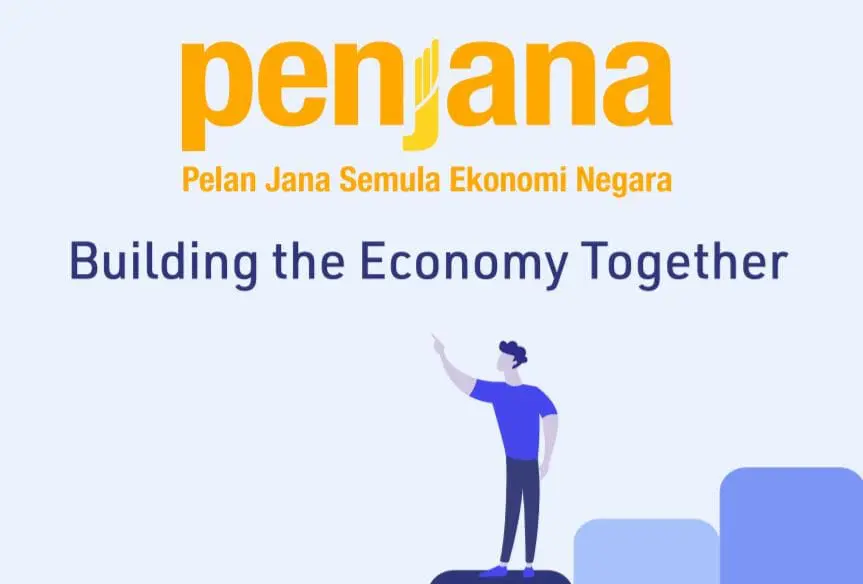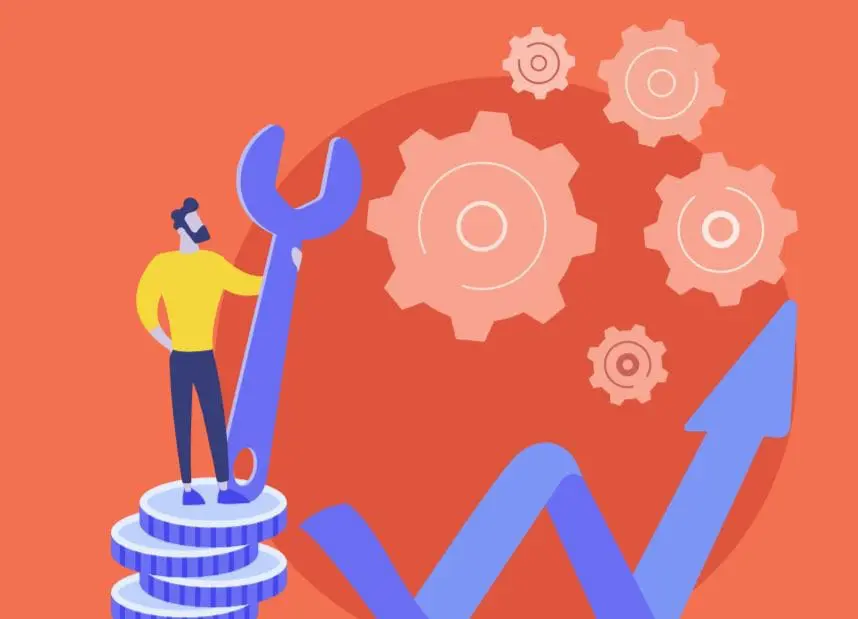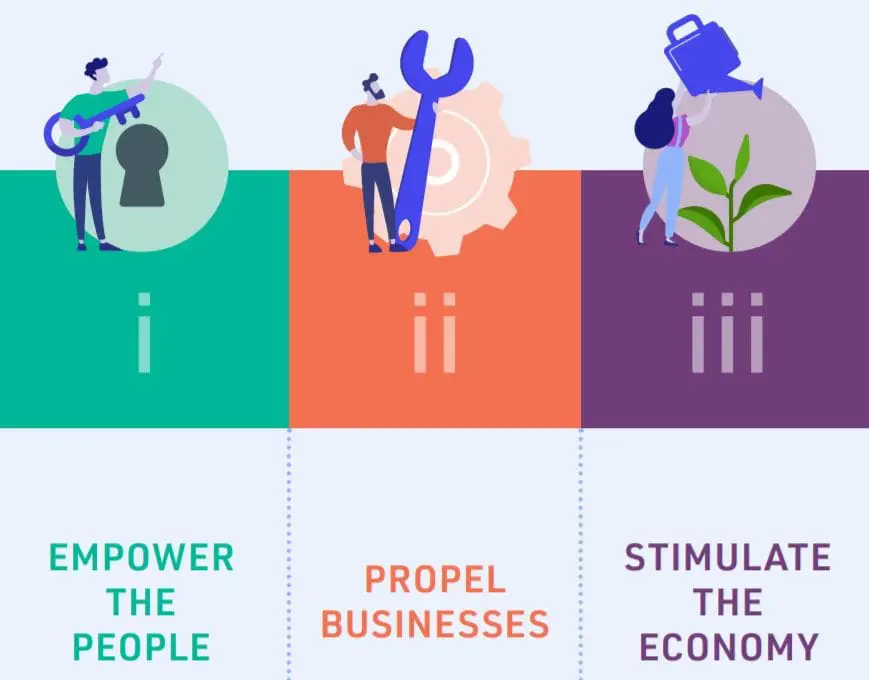Hann Liew
12th June 2020 - 6 min read

So we’ve had the weekend and a few days to digest the announcement of the latest Covid-19 triggered economic stimulus in Malaysia, the “Pelan Jana Semula Ekonomi Negara” or Penjana for short. This is the fourth economic stimulus package by the government in its multi-tiered efforts to restore the economy:
- Feb-2020 – RM20b – 2020 Economic Stimulus Package
- March-2020 – RM230b – Prihatin
- April-2020 – RM10b – 2nd Extended Prihatin ‘Top-up’ for SMEs
- June-2020 – RM35b – Penjana
So what are the key differences?
While the first economic stimulus package was geared towards industries impacted by Covid-19 pre-MCO (tourism, retail), and Prihatin (+Extended Prihatin) was a large hammer to stomp out any risk of total economic collapse as a result of the MCO (i.e., limiting damage to all industries, across both demand and supply).
So what’s new with Penjana (vs Prihatin)?

In contrast with the giant CPR device that was Prihatin, Penjana appears to be a targeted scalpel approach to reflect new realities of our economic mix, for example:
- It’s smaller (RM35b vs RM250b)
- Incentives for gig workers and flexibility of work (both Flexible Working Arrangements (FWA) and childcare)
- Digital focus on business support initiatives (e.g. Shop Malaysia Online, eCommerce, Digital Adoption, e-wallets and digitalisation of government etc.)
- Helping specific economic sectors that the government sees as either needing the most support (e.g. property, cars, tourism, arts, culture, events) or that need additional focus in a post-pandemic world (agriculture/food sector)
My team has done a whole bit on summarising Penjana here, and the MOF has helpfully prepared a booklet for download here.
First Penjana Thoughts: Tips for Salaried Workers
If you’re still employed, not been put on unpaid leave, and earning a salary, here are some tips and reminders for you to note over the next 3-6 months.

Unlike in Prihatin, the Wage Subsidy Programme (giving out a subsidy to employers in exchange for not laying off anyone or reducing salaries for anyone) will now allow employers to continue receiving a (smaller) subsidy to reduce pay of those employees.
This used to be classified as a BIK (benefits in kind) which was taxable but you now have up to RM5,000 worth of tax exempted amounts if you received a laptop/smartphone/tablet from your company. Plus, there’s a special RM2,500 individual income tax relief to purchase the same 3 items, on top of the standard RM2,500 lifestyle personal relief.
If you have not taken the opportunity during the MCO (and CMCO if relevant to your employer) to showcase/increase your productivity levels, perhaps with expectations of a quick “return to office” after a few weeks, this might now be the time to. This is likely to be accelerated and made permanent by tax deductions about to be given to your employer for Flexible Work Arrangements (FWA). This means that employees who can demonstrate similar/increased productivity despite being at home will likely be assessed favourably going forward.
While the Home Ownership Campaign and sales tax exemptions on car sales has been announced, I’d suggest to wait until the property developers and car manufacturers have had some time (a few weeks at least) to digest and reprice their inventories. As a consumer you don’t want to caught flat footed by making a rash purchase before all companies have finished repricing their goods.
First Penjana Thoughts: Tips for SMEs
As an SME owner myself (RinggitPlus is an SME…), I can certainly say that the battery of initiatives and incentives given by the government in Prihatin, Extended Prihatin and Penjana can be overwhelming. I’ve covered both Prihatin+Extended Prihatin and some quick Post MCO fixes in previous posts, but Penjana comes with a couple of complexities, that is:
- What to do will differ depending on which industry you’re in
- What to do will differ depending on how ready your business is to sell to or service customers online.
Regardless of that, I believe the following thoughts might still be relevant:

A grant is money from the government given to companies (and sometimes individuals) for specific reasons (R&D or Economic Sector Development). Usually not repayable unless certain grant conditions are not met, such as missing milestones or outcomes. Loans are exactly what they are, repayable (with interest) over time. Check out all the relevant digitalisation (particuarly the SME Digitalisation Matching Grant and the Smart Automation Grant) and recovery grants available, but with loans, be sure to first establish whether your business has a short term liquidity issue (take a loan to tide you through) or a long term solvency issue (take any grant you can, and then restructure your business).
Sounds like a different scheme, but in reality very similar (3.5% p.a. flat rate with 6 month moratorium at the start), the couple of differences being a Penjana maximum amount of RM500,000 and a RM2bn allocation vs RM1m and RM10bn allocation for the SRF in Prihatin. If you were told “sorry SRF is full, your application is pending” in May now’s the time to chase up to be first in line for the PSF.
From hiring unemployed people, to offering devices directly to staff to work from home (rather than buying company PCs and leaving them in the office), to strategising Flexible Working Arrangements (eg 50% in/out of office).

Obviously the quick tips and reminders above are highly dependent on which situation/industry you find yourself in, but one thing is clear regardless of whether you’re an individual or an SME owner -> You need to get informed (hopefully reading this helps) and act quickly.
Overall, Penjana looks to tick all the right boxes and focuses help in areas which needs it the most, but the best way to describe it is a “getting-Malaysia-back-to-work” and a “getting-Malaysians-spending-again” plan, with notable absences of cash handouts do the M40 / B40 segments a la Bantuan Prihatin Nasional (BPN).
Remember, “getting-Malaysians-spending-again” is needed to plug the hole in our economy (as stated by PM Tan Sri Muhyiddin Yassin, the country suffered an economic cost of RM2.4b per day for every day in the MCO), but you can’t save the economy if you yourself are not “saved” first. As before, think of it like the oxygen mask in an airplane. In an emergency, you should put one on for yourself first before helping others in your care (in this case, the economy).
Just lost your job? or SME Owner facing insolvency? Drop me a comment below (or feel free to email me directly) and I’ll be more than happy to help if I can.
About THE AUTHOR
Hann Liew








Related articles


Comments (0)